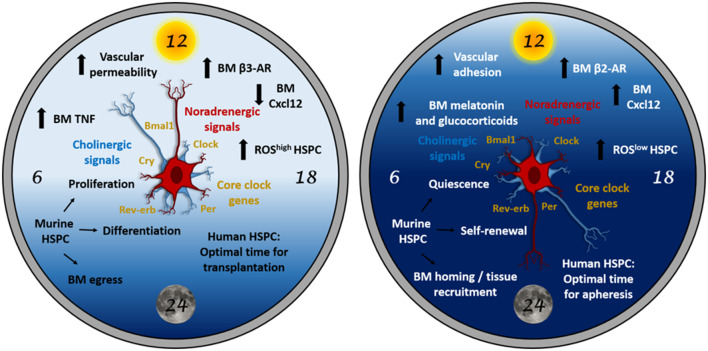Figure 1.
The “circadian clock” for HSPCs. HSPC biology is subjected to light-entrained circadian regulation orchestrated by the central clock (suprachiasmatic nucleus in the brain) and relayed to the BM by neural signals (noradrenergic and cholinergic), hormones and cytokines. At daytime (left panel), these signals trigger mouse HSPC proliferation, differentiation and egress to the bloodstream. At night (right panel), similar signals trigger different responses in the BM microenvironment resulting in mouse HSPC quiescence, self-renewal and homing to BM or peripheral tissues. In humans (diurnal), circadian oscillations occur in antiphase with mice (nocturnal). Therefore, the HSPC harvest yield from peripheral blood would be higher during the evening, whereas the homing efficiency of the transplanted HSPCs would be higher in the morning in humans. Although the possible role of clock genes in HSPCs remains under-investigated and might not be essential under homeostasis, clock genes (which regulate cell cycle) in HSCs might be important during stress or in hematological malignancies.

